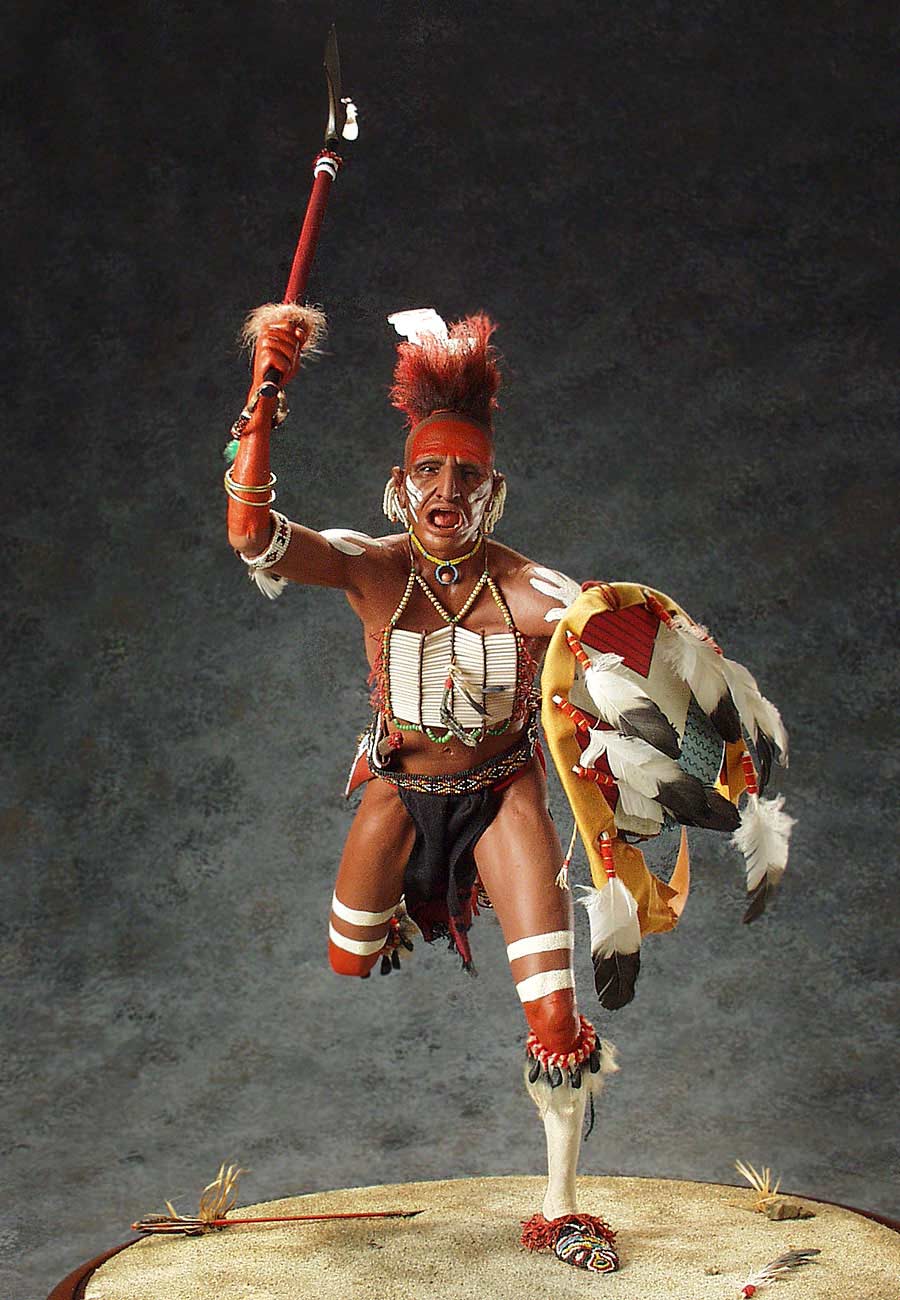
Meskwaki and Sauk are two distinct tribal groups. Linguistic and cultural linkages between the two tribes have made them often associated in history. Under US government recognition treaties, officials treat the Sac (anglicized Sauk term) and Meskwaki as a single political unit, despite their separate identities.Meskwaki are of Algonquian origin from the prehistoric Woodland period culture area. The Meskwaki language is a dialect of the language spoken by the Sauk and Kickapoo, within the Algonquian languages family.
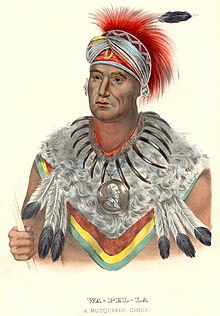
HistorAccording to archeologists, about ten thousand years ago, peoples from the Eurasian landmass migrated to modern-day North America via the Bering Strait land bridge. Approximately seven thousand years ago, groups of these earlier migrants reached and settled in what is now known as Ontario, in Central Canada. Around the turn of the 1st century, the "Great Drought" took place. The lands which the ancestors of the Meskwaki inhabited did not receive enough rain to sustain their population, and the group lost about 98% of its members.
]
The Meskwaki lived along the Saint Lawrence River in present day Ontario, east of Michigan. The tribe may have numbered as many as 10,000, but years of war with the Huron,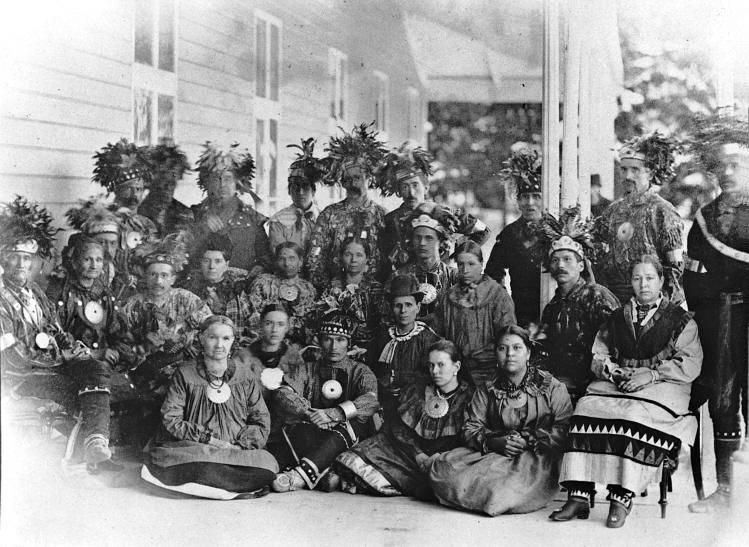 whom the French colonial agents supplied with arms, and exposure to European infectious diseases reduced their numbers. In response to these pressures, the Meskwaki migrated west, first to the area between Saginaw Bay
whom the French colonial agents supplied with arms, and exposure to European infectious diseases reduced their numbers. In response to these pressures, the Meskwaki migrated west, first to the area between Saginaw Bay  and Detroit west of Lake Huron in present day eastern Michigan. Later they moved further west into Wisconsin.
and Detroit west of Lake Huron in present day eastern Michigan. Later they moved further west into Wisconsin.
 whom the French colonial agents supplied with arms, and exposure to European infectious diseases reduced their numbers. In response to these pressures, the Meskwaki migrated west, first to the area between Saginaw Bay
whom the French colonial agents supplied with arms, and exposure to European infectious diseases reduced their numbers. In response to these pressures, the Meskwaki migrated west, first to the area between Saginaw Bay  and Detroit west of Lake Huron in present day eastern Michigan. Later they moved further west into Wisconsin.
and Detroit west of Lake Huron in present day eastern Michigan. Later they moved further west into Wisconsin.
The Meskwaki gained control of the Fox River system in eastern and central Wisconsin.
 This river became vital for the colonial New France fur trade through the interior of North America between northern 'French Canada' to the French ports on the Gulf of Mexico. As part of the Fox–Wisconsin Waterway the Fox River allowed travel from Lake Michigan and the other Great Lakes via Green Bay to the Mississippi River system.
This river became vital for the colonial New France fur trade through the interior of North America between northern 'French Canada' to the French ports on the Gulf of Mexico. As part of the Fox–Wisconsin Waterway the Fox River allowed travel from Lake Michigan and the other Great Lakes via Green Bay to the Mississippi River system.

 This river became vital for the colonial New France fur trade through the interior of North America between northern 'French Canada' to the French ports on the Gulf of Mexico. As part of the Fox–Wisconsin Waterway the Fox River allowed travel from Lake Michigan and the other Great Lakes via Green Bay to the Mississippi River system.
This river became vital for the colonial New France fur trade through the interior of North America between northern 'French Canada' to the French ports on the Gulf of Mexico. As part of the Fox–Wisconsin Waterway the Fox River allowed travel from Lake Michigan and the other Great Lakes via Green Bay to the Mississippi River system.
At first European contact in 1698, the French estimated the number of Meskwaki as about 6,500. By 1712, the Meskwaki were down to 3,500.
[
The Meskwaki fought against the French, in what are called the Fox Wars, for more than three decades (1701–1742) to preserve their homelands. The Meskwaki resistance to French rule was so effective that the King of France signed a decree commanding the complete extermination of the Meskwaki—the only edict of its kind in history. The Sauk and Meskwaki allied in 1735 to fend off the Europeans and other Indian tribes.
The First Fox War with the French lasted from 1712-1714. The first Fox War with Europeans was purely economic in nature. The French wanted rights to use the river system to gain access to the Mississippi. After the Second Fox War of 1728, the remaining 1,500 Meskwaki were reduced to 500 people. They found shelter with the Sac, but French competition carried to that tribe. In the Second Fox War, the French increased their pressure on the tribe to gain access to the Fox and Wolf Rivers.
After the 1701 founding of Detroit as a trading post at the strategic location between the Upper and Lower Great Lakes, Governor Cadillac invited numerous tribes to settle in the area.Ottawa and Huron peoples established villages in the area, soon joined by Potawatomi, Miam

After the 1701 founding of Detroit as a trading post at the strategic location between the Upper and Lower Great Lakes, Governor Cadillac invited numerous tribes to settle in the area.Ottawa and Huron peoples established villages in the area, soon joined by Potawatomi, Miam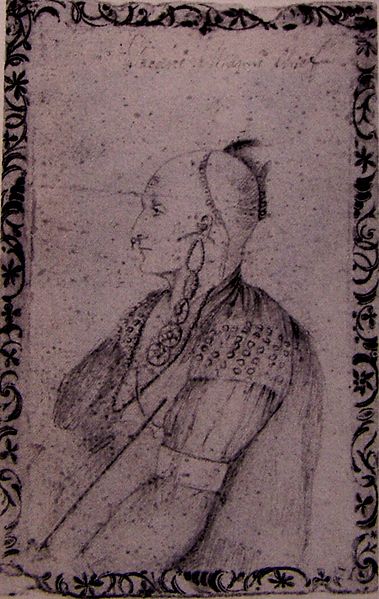 i, and Ojibwa. The population may have reached 6,000 at times. Conflicts between the Ottawas and the Miamis led to the Miamis' removing to the Ohio area after 1708The Wisconsin tribes (Fox, Sauk, Mascouten, Kickapoo
i, and Ojibwa. The population may have reached 6,000 at times. Conflicts between the Ottawas and the Miamis led to the Miamis' removing to the Ohio area after 1708The Wisconsin tribes (Fox, Sauk, Mascouten, Kickapoo and Winnebago)
and Winnebago) prevented the French from having direct trade access to the Sioux. The French invited the tribes to start settlements at Detroit. In the spring of 1712, a large group of Fox under Lamyma, a peace chief, and Pemaussa, a war chief, established villages in the area, including one only 50 feet (15 m) from the walls of Fort Pontchartrain. The Mascouten, under Kisis and Ouabimanitou, also established a village nearby. Most of the Huron and Ottawa were still out in winter hunting camps and the new French commander, Charles Regnault, Sieur Dubuisson
prevented the French from having direct trade access to the Sioux. The French invited the tribes to start settlements at Detroit. In the spring of 1712, a large group of Fox under Lamyma, a peace chief, and Pemaussa, a war chief, established villages in the area, including one only 50 feet (15 m) from the walls of Fort Pontchartrain. The Mascouten, under Kisis and Ouabimanitou, also established a village nearby. Most of the Huron and Ottawa were still out in winter hunting camps and the new French commander, Charles Regnault, Sieur Dubuisson , had perhaps as few as 30 fighting men in his garrison at the fort.Dubuisson may have requested that the Fox remove their village and also sent messages to hurry the return of the more friendly Huron and Ottawa. At some point, the Fox and Mascouten learned of the winter raid by Saguina and his Ottawa upon a village on the St. Joseph River
, had perhaps as few as 30 fighting men in his garrison at the fort.Dubuisson may have requested that the Fox remove their village and also sent messages to hurry the return of the more friendly Huron and Ottawa. At some point, the Fox and Mascouten learned of the winter raid by Saguina and his Ottawa upon a village on the St. Joseph River that had killed over 150 Mascouten. The Fox and Mascouten began threatening the Ottawa and French and took some Ottawa hostage. The hunters soon returned, with Makisabe and Saguina arriving with hundreds of men. The Illiniwek chief Makovaandely arrived, along with Illiniwek, Missouri and Osage warriors.The Fox and Mascouten used fire arrows to damage the buildings of Fort Ponchartrain, but they were driven inside their palisaded village north of the fort. They fought from trenches to avoid the musket and mortar fire from their French-supplied opponents. After several days, the Fox asked for a ceasefire and returned some hostages; however, no ceasefire was granted. Several days later, another parley occurred, as the Fox tried to seek protection of the women and children. Dubuisson chose to let his allies decide their course; they chose to grant no mercy. After nineteen days, during a nighttime thunderstorm, the Fox escaped their village and fled north. The French-allied Indians caught them near the head of the Detroit River
that had killed over 150 Mascouten. The Fox and Mascouten began threatening the Ottawa and French and took some Ottawa hostage. The hunters soon returned, with Makisabe and Saguina arriving with hundreds of men. The Illiniwek chief Makovaandely arrived, along with Illiniwek, Missouri and Osage warriors.The Fox and Mascouten used fire arrows to damage the buildings of Fort Ponchartrain, but they were driven inside their palisaded village north of the fort. They fought from trenches to avoid the musket and mortar fire from their French-supplied opponents. After several days, the Fox asked for a ceasefire and returned some hostages; however, no ceasefire was granted. Several days later, another parley occurred, as the Fox tried to seek protection of the women and children. Dubuisson chose to let his allies decide their course; they chose to grant no mercy. After nineteen days, during a nighttime thunderstorm, the Fox escaped their village and fled north. The French-allied Indians caught them near the head of the Detroit River and inflicted four more days of fighting. They nearly overwhelmed the Fox and Mascouten, who lost 150 captives. By the end of the siege and pursuit, around 1,000 Fox and Mascouten men, women and children had been killed (including many of the captives). The French had 30 men killed, and their allies had 60 fatalities.The French sent joint expeditions out against the Fox. In 1716, an expedition of 200 French with 600 Indian allies captured Fox warchief Pemaussa. His capture ended the war.The Fox continued to harass French settlements along the Mississippi River. They also raided the Illiniwek and attacked French trade on Lake Michigan. By 1720, Kiala led the anti-French faction of the Fox but faced raids by French-supported tribes: Potawatomi, Ojibwa, Huron and Ottawa. In 1733, Kiala was captured. The French sold him into slavery in the West Indies. The French gave other captured Fox as slaves to allied tribes.The remnants of the tribe, numbering around 500, took refuge among the Sauk. The French pursued destruction of the Fox to such an extent as to damage their relations with other tribes.
and inflicted four more days of fighting. They nearly overwhelmed the Fox and Mascouten, who lost 150 captives. By the end of the siege and pursuit, around 1,000 Fox and Mascouten men, women and children had been killed (including many of the captives). The French had 30 men killed, and their allies had 60 fatalities.The French sent joint expeditions out against the Fox. In 1716, an expedition of 200 French with 600 Indian allies captured Fox warchief Pemaussa. His capture ended the war.The Fox continued to harass French settlements along the Mississippi River. They also raided the Illiniwek and attacked French trade on Lake Michigan. By 1720, Kiala led the anti-French faction of the Fox but faced raids by French-supported tribes: Potawatomi, Ojibwa, Huron and Ottawa. In 1733, Kiala was captured. The French sold him into slavery in the West Indies. The French gave other captured Fox as slaves to allied tribes.The remnants of the tribe, numbering around 500, took refuge among the Sauk. The French pursued destruction of the Fox to such an extent as to damage their relations with other tribes.
The Sauk clans that granted membership to the survivors of the Fox are sometimes called the Sauk and Fox or, today, the Sac and Fox.jim thorpe was one Their hereditary feud with New France encouraged many Sauk and Fox warriors to develop kinship ties with France's rivals, the British. These ties continued to be significant as late as the War of 1812, when many Sauk and Fox fought on the side of British North America.
Members of the Meskwaki tribe spread through southern Wisconsin, and along the present day Iowa-Illinois border. In 1829 the US government estimated there were 1,500 Meskwaki (along with 5,500 Sac, or Sauk). Both tribes moved southward from Wisconsin into Iowa, Illinois, and Missouri. The Anishinaabe peoples called the Meskwaki Odagaamii, meaning “people on the other shore,” a name which the French adopted into their pronunciation system as “Outagamie”. This name was used to designate today's Outagamie County ofWisconsin.
[]
They were forced to leave their territory by land-hungry American settlers, and President Jackson signed the “Removal Act of 1830”, which removed them from their land. They refused and many were cowardly murdered by Lieutenant Jefferson Davis and militia volunteers in 1830.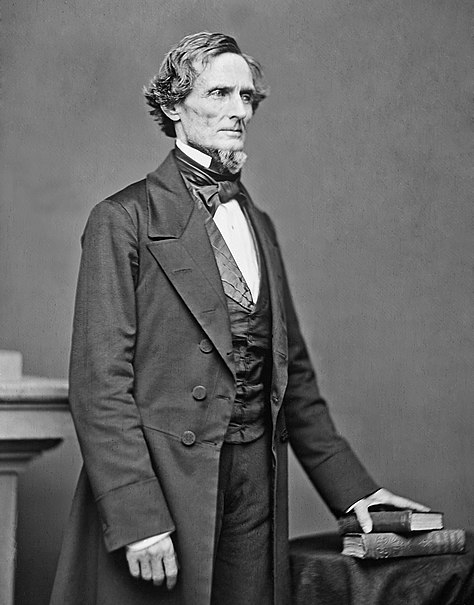

Some Meskwaki were involved with Sac members in the Black Hawk War  over homelands in Illinois. After the Black Hawk War of 1832, the United States officially combined the two tribes into a single group known as the Sac & Fox Confederacy for treaty-making purposes. Through a series of land cessions under the name of “Sac & Fox”, the Sauk and Meskwaki tribes lost all their lands. Soon after, the U.S. government forced the Sauk to a reservation in Indian Territory, present day Oklahoma.
over homelands in Illinois. After the Black Hawk War of 1832, the United States officially combined the two tribes into a single group known as the Sac & Fox Confederacy for treaty-making purposes. Through a series of land cessions under the name of “Sac & Fox”, the Sauk and Meskwaki tribes lost all their lands. Soon after, the U.S. government forced the Sauk to a reservation in Indian Territory, present day Oklahoma.
 over homelands in Illinois. After the Black Hawk War of 1832, the United States officially combined the two tribes into a single group known as the Sac & Fox Confederacy for treaty-making purposes. Through a series of land cessions under the name of “Sac & Fox”, the Sauk and Meskwaki tribes lost all their lands. Soon after, the U.S. government forced the Sauk to a reservation in Indian Territory, present day Oklahoma.
over homelands in Illinois. After the Black Hawk War of 1832, the United States officially combined the two tribes into a single group known as the Sac & Fox Confederacy for treaty-making purposes. Through a series of land cessions under the name of “Sac & Fox”, the Sauk and Meskwaki tribes lost all their lands. Soon after, the U.S. government forced the Sauk to a reservation in Indian Territory, present day Oklahoma.The Dakota Sioux  called the Meskwaki who successfully fled west of the Mississippi River the "lost people".
called the Meskwaki who successfully fled west of the Mississippi River the "lost people".
 called the Meskwaki who successfully fled west of the Mississippi River the "lost people".
called the Meskwaki who successfully fled west of the Mississippi River the "lost people".The United States persuaded the Sauk and Meskwaki to sell all their claims to land in Iowa in a treaty of October 1842. They moved to land west of a temporary line (Red Rock Line) in 1843. They were removed to a reservation in east central Kansas in 1845 via the Dragoon Trace. Some Meskwaki remained hidden in Iowa, with others returning within a few years.
[
In 1857, the Meskwaki purchased the first 80 acres (320,000 m2) in Tama County;
 Tama was named for Taimah, a Meskwaki chief of the early 19th century. Many Meskwaki later moved to the Meskwaki Settlement
Tama was named for Taimah, a Meskwaki chief of the early 19th century. Many Meskwaki later moved to the Meskwaki Settlement near Tama, Iowa, which was started in 1857.In 1856 the Iowa legislature passed an unprecedented act allowing the Meskwaki to purchase land, Indians were not usually permitted to do so in the U.S., allowing the Meskwaki to stay. Government officials declared that the Meskwaki could not own land because legally Indians were not US citizens.
near Tama, Iowa, which was started in 1857.In 1856 the Iowa legislature passed an unprecedented act allowing the Meskwaki to purchase land, Indians were not usually permitted to do so in the U.S., allowing the Meskwaki to stay. Government officials declared that the Meskwaki could not own land because legally Indians were not US citizens.The U.S. government tried to force the tribe back to the Kansas reservation by withholding treaty-right annuities. Ten years later, the U.S. finally began paying annuities to the Meskwaki in Iowa. They recognized the Meskwaki as the Sac and Fox of the Mississippi in Iowa. The jurisdictional status was unclear. The tribe then had formal federal recognition with eligibility for Bureau of Indian Affairs services. It also had a continuing relationship with the State of Iowa due to the tribe’s private ownership of land, which was held in trust by the governor.
For the next 30 years, the Meskwaki were virtually ignored by federal as well as state policies. Subsequently, they lived more independently than tribes confined to regular reservations which were regulated by federal authority. To resolve this jurisdictional ambiguity, in 1896 the State of Iowa ceded to the Federal Government all jurisdiction over the Meskwaki]
No comments:
Post a Comment